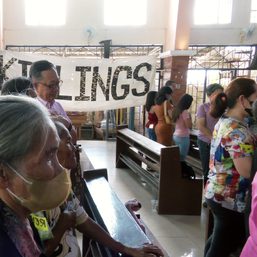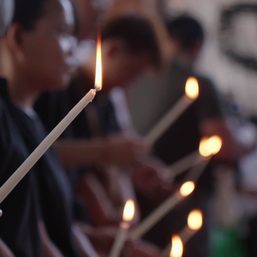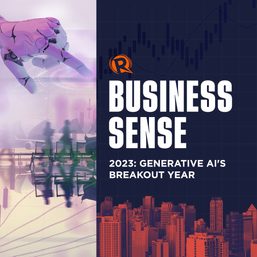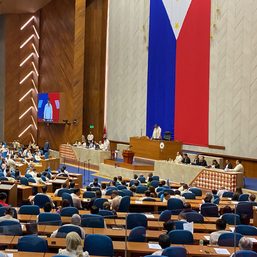SUMMARY
This is AI generated summarization, which may have errors. For context, always refer to the full article.
![[ANALYSIS] 7 charts that sum up how the PH economy endured 2020](https://www.rappler.com/tachyon/2020/12/charts-economy-sq.jpg)
What a chaotic year 2020 has been.
As well as facing its worst health crisis in decades, the Philippines suffered its worst economic crisis since World War II. Although the pandemic left long, deep scars on Filipinos’ economic lives, it’s also an opportunity to transform our economy for the better.
Here are 7 graphs that try to capture how our economy endured 2020. I also offer guesses on where we might be headed.
Worst economic crisis since WWII
Figure 1.
What happened: The country’s total output, measured by gross domestic product (GDP), contracted by 10% in the first 9 months of this year, compared with the same period in 2019. That’s P1.41 trillion in lost income. Had our economy grown by 6% — as one might reasonably expect — our losses would’ve ballooned to P2.26 trillion, and the contraction would’ve been worse at 15%. Average income is at a 5-year low, so it’s as if the economic gains in the past 5 years have been erased. Our output also contracted the most in ASEAN: other countries like Vietnam, by stark contrast, averted a recession altogether by promptly containing the virus.
What’s next: Government economists predict a total contraction of 8.5-9.5% this year, and many private analysts expect us to suffer the worst downturn in the region. As quarantine restrictions ease, the economic losses next year might become muted. But until vaccines are distributed widely and equitably, it will take years to return to pre-pandemic levels of prosperity — especially if government fails to ramp up stimulus spending. One international think tank also ranked us as the economy most likely to suffer the pandemic’s long-run effects, partly because of the current structure of our economy, which is too reliant on services.
Online economy flourishes
Figure 2.
What happened: Not all sectors tanked; our internet economy actually thrived. Data show a whopping 55% growth in e-commerce (think Shopee, Lazada), 48% growth in food deliveries (think Grab Food and Foodpanda), and 27% growth in online media (think Netflix, Spotify, and online gaming). A record number of Filipinos also came to rely on online banking platforms (think GCash and Paymaya). Still, rather unexpectedly, there was a 66% drop in online travel (think bookings for flights and hotels).
What’s next: Relaxed quarantine rules will temper the dizzying growth of our internet economy. Still, the behavior changes induced by the pandemic will likely persist. A greater proportion of our workers will want to try (even demand) working from home. Many brick-and-mortar shops and restaurants will not return and choose a wholly online presence instead. Many higher education institutions will want to develop online courses, and telemedicine might become more popular. To support all these changes, internet access and speeds will have to improve drastically. Official output statistics will also need to do a better job capturing our internet economy.
Filipinos left labor force in droves
Figure 3.
What happened: Labor statistics went off the charts. Unemployment rose to a record high in April, at 17.6%. But that’s just the tip of the iceberg. As most Filipinos worked fewer hours, underemployment also rose to its highest level since 2016. Millions discouraged by the lack of good job prospects also left the labor force entirely, driving labor force participation to an unsettling record low. Many of them were parents (especially moms) who were forced to stay at home to take care of their families and oversee their kids’ online education.
What’s next: Unemployment has gone down since April, but is still quite high vis-à-vis the long-run trend. Much more worrisome is the plummeting of labor force participation. Until schools fully reopen, millions of Filipinos will continue to shun the labor force, and this will surely drag out our economy’s recovery. Expect more permanent shifts within the labor force, too. Many jobs in services won’t come back (like in tourism) and more Filipinos will seek jobs in internet-related sectors (like e-commerce).
Remittances have dried up
Figure 4.
What happened: This year saw a record number of overseas Filipino workers (OFWs) displaced and forced to return home: about 370,000, with 126,000 more stranded abroad. For the first time in decades, the average growth of OFW remittances — which have kept our economy afloat for the longest time — went into the red. Apart from hurting the purchasing power of their loved ones, this trend also impairs total growth of total consumer spending — hence, economic growth at large.
What’s next: While remittances have picked up in recent months, the continual strengthening of the peso — owing largely to the crunch in imports and the general weakness of our economy — diminishes the peso value of these inflows. Seeing that 2021 will continue to be a difficult year for the global economy, many OFWs will fail to return abroad any time soon. In the meantime, they need to adapt and receive sufficient amount of economic aid from government; otherwise, some might be added to the ranks of the poor.
Hunger, poverty rising
Figure 5.
What happened: Economic misery rose steeply this year. The hunger rate skyrocketed to its highest level on record: nearly 1 in 3 Filipino households. Nearly half of all families also said they were poor in November, but the figure likely shot up in the months prior. Economic pessimism is also at an all-time high: in May, 83% of Filipinos said the quality of their lives worsened in the past year, and in September the rate was still as high as 82%. Economic pessimists outnumbered optimists for the first time since the Arroyo administration. And consumer confidence fell to its lowest level ever.
What’s next: Rampant economic misery calls for massive infusions of economic aid. But the Duterte government failed to provide that. The emergency subsidies in Bayanihan 1 dried up too easily, and aid funding in the 2021 budget was even slashed because of the misplaced austerity of Duterte’s economic managers. One study estimated that as many as 5.5 million individuals could be pushed into poverty if they fail to receive enough economic aid. Consumer confidence is also key to our economy’s recovery. But merely reopening huge swaths of our economy won’t do the trick.
Debt is piling up
Figure 6.
What happened: As its revenues shrank and its expenditures swelled this year, government was forced to borrow lots of money from multilateral agencies such as the Asian Development Bank and the World Bank. As of December 15, government has racked up $13.36 million (or about P641 billion) in new external funding. But in fact more funds were borrowed from domestic sources. Because of all this, the debt-to-GDP ratio (a measure of indebtedness) reached 51.2% in September — the highest since 2009.
What’s next: If Duterte soon signs the Create bill — which features corporate tax cuts — expect a further hemorrhaging of tax revenues, which will further put pressure on government to borrow. But more than the rise of indebtedness, much more alarming is the economic managers’ misplaced fiscal austerity, which made them overly reluctant to finance further infusions of economic aid. Borrowing more is okay if it will abate the economic misery caused by the pandemic. Equally disturbing is the slowdown of government spending in spite of the infusion of new loans.
Weak monetary, fiscal policies
Figure 7.
What happened: To combat the recession, government resorted to monetary and fiscal policies. But both have proven weak. Despite ever lower interest rates set by the Bangko Sentral ng Pilipinas (BSP), bank lending has crawled to its slowest pace in more than a decade. The executive and legislative branches must save the day through aggressive fiscal spending. But Bayanihan 1 and 2 were peanuts next to the economy’s GDP losses. And in the 3rd quarter government spending slowed down rather than ramped up. Public construction even shrank, debunking the claim that Build, Build, Build could rescue our economy.
What’s next: Until borrowers and creditors become more confident in each other and in the economy, lending will continue to slow down. For its part, Congress passed a 2021 budget that’s just 10% larger than the present budget. Worse, next year’s budget has its priorities wrong: too much of the allocation increases will go into infrastructure, which won’t feasibly revive the economy. Budgets for economic aid, which could help shore up consumer spending, have also been slashed. Absent aggressive fiscal policy, our economy will certainly take longer to recover.
All in all, 2020 was a year of massive economic suffering. It didn’t have to be this way, if only the Duterte government addressed the pandemic sooner and more seriously, and had they spent money smartly, aggressively.
A speedy procurement and distribution of vaccines could shore up our economy. But given its track record, the Duterte government will likely botch the vaccines, too.
There’s hope for our economy in 2021. But brace for a difficult road ahead. – Rappler.com
JC Punongbayan is a PhD candidate and teaching fellow at the UP School of Economics. His views are independent of the views of his affiliations. Follow JC on Twitter (@jcpunongbayan) and Usapang Econ (usapangecon.com).
Add a comment
How does this make you feel?


![[Time Trowel] Evolution and the sneakiness of COVID](https://www.rappler.com/tachyon/2024/02/tl-evolution-covid.jpg?resize=257%2C257&crop=455px%2C0px%2C1080px%2C1080px)





![[Just Saying] Diminished impact of SC Trillanes decision and Trillanes’ remedy](https://www.rappler.com/tachyon/2024/04/Diminished-impact-of-SC-Trillanes-decision-and-remedy.jpg?resize=257%2C257&crop=273px%2C0px%2C720px%2C720px)
![[Rappler Investigates] Son of a gun!](https://www.rappler.com/tachyon/2024/03/newsletter-duterte-quiboloy.jpg?resize=257%2C257&crop=450px%2C0px%2C1080px%2C1080px)





There are no comments yet. Add your comment to start the conversation.